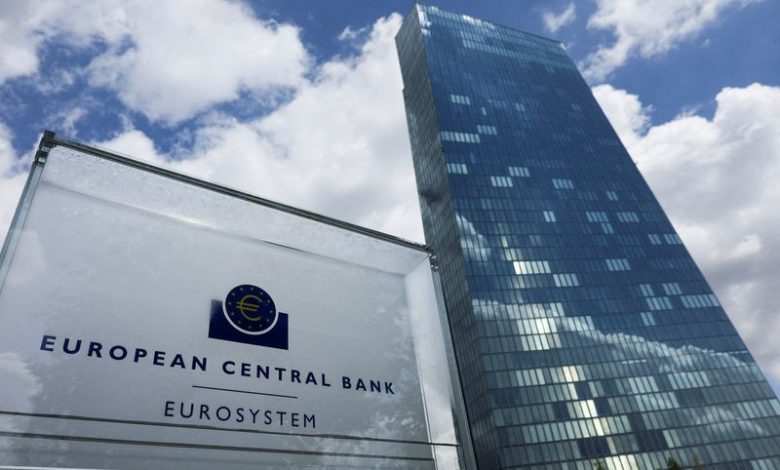
ECB Rates Set for 25bp Cut as Growth Risks Increase
After a pause in July, the European Central Bank (ECB) is anticipated to lower interest rates by an additional 25 basis points on September 12. However, consensus among the members is not guaranteed. Doves are increasingly worried about growth, while hawks are calling for more clarity before agreeing to further rate cuts. Let’s examine the current expectations ahead of the upcoming ECB meeting.
Annalisa Piazza, Fixed Income Research Analyst at MFS Investment Management, predicts a 25 basis point cut in September, supported by economic indicators suggesting inflation will likely meet target levels by the latter half of 2025. This reduction is expected and has been priced into the market. With current market expectations around 2.25% for a gradual rate-cutting cycle, significant market movement is unlikely unless the ECB signals a quicker pace for cuts, which appears improbable at this time. The ECB is more likely to adopt a data-driven approach, emphasizing the need for evidence of falling core inflation before considering this a victory.
During the press conference, two key factors to observe will be the ECB’s assessment of downside risks to growth, as indicated by previous meeting minutes, and the steadfastness of the hawkish members, such as Isabel Schnabel, in their positions.
The increasing risks to growth, coupled with demand-driven disinflation, pose a question: how long will the ECB maintain a restrictive stance despite growth not achieving solid recovery? September may be too early to abandon a data-dependent approach, with October potentially serving as a better time to acknowledge the need for a less rigid stance to avoid falling into a disinflationary spiral.
Tomasz Wieladek, Chief European Economist at T. Rowe Price, also expects a 25 basis point reduction. He notes that signs of weakening economic growth and falling inflation support this decision. However, the critical question remains whether the ECB will provide insights into its future monetary policy direction. Current financial market expectations suggest a shift from quarterly rate reductions in 2024 to a more frequent approach in 2025. Consequently, market participants will closely scrutinize the statement and press conference for indications of future ECB policy.
The ECB will likely stress that its decisions will hinge on evolving economic data, with President Lagarde expected to affirm that policy remains contingent on both data and forecasts. While some indicators suggest contraction in sectors like manufacturing, the economy overall seems stable.
HICP services inflation has remained above 4% since November, with a tight labor market driving this inflation. Wage negotiations in the Eurozone are projected to exceed 4% again in the third quarter, likely sustained through mid-2025. These fluctuating data trends will encourage the ECB to remain cautious moving forward.
Steven Bell, Chief Economist EMEA at Columbia Threadneedle Investments, notes a widespread consensus that central banks are entering “rate-cut mode.” While the ECB is likely to follow suit, the emphasis is more on the pace and extent of cuts rather than the direction itself. By year’s end, the market anticipates various cuts across central banks, with the ECB predicted to reduce rates significantly.
In the context of slow growth and pressures from the European Commission for tighter fiscal policies, current expectations for rate cuts seem reasonable.
Gilles Moëc, AXA Group Chief Economist, states that the ECB’s decisions will precede the Federal Reserve’s, and while a clear path is expected post-cut, the ECB may not provide much clarity yet. Market observers will watch for any signals of “forward guidance” from President Lagarde, who is expected to be somewhat reserved in her communications.
David Chappell, Senior Fixed Income Portfolio Manager at Columbia Threadneedle Investments, emphasizes the ECB’s recent cautious approach, aiming to temper market speculation regarding consecutive rate cuts. The discussions surrounding the anticipated initial cut by the Fed will also impact the ECB’s considerations in October.
Alessandro Tentori, Chief Investment Officer of AXA IM Italia, highlights that while a 25 basis point cut is largely priced in, some hawkish members remain wary, making unanimous agreement uncertain. Chief Economist Philip Lane’s recent comments suggest that a return to inflation targets isn’t guaranteed, indicating the possibility of maintaining a restrictive monetary stance.
As the ECB resets its monetary policy and considers future strategies, the focus will include the potential guidelines for debt purchasing programs and plans to tackle inflationary pressures. These discussions will examine the costs and benefits of such programs to ensure effective monetary policy in the future.
Alex Everett, investment manager at abrdn, suggests that following aggressive tightening measures, it’s time for central banks to normalize policies. While the risk of a global recession remains low, excessive rate cuts are unnecessary. The ECB’s recent growth and wage performance contrasts with easing wage pressures, indicating that the committee’s discussions on cuts may become less controversial in the future.
 GOOGL
GOOGL  META
META 


